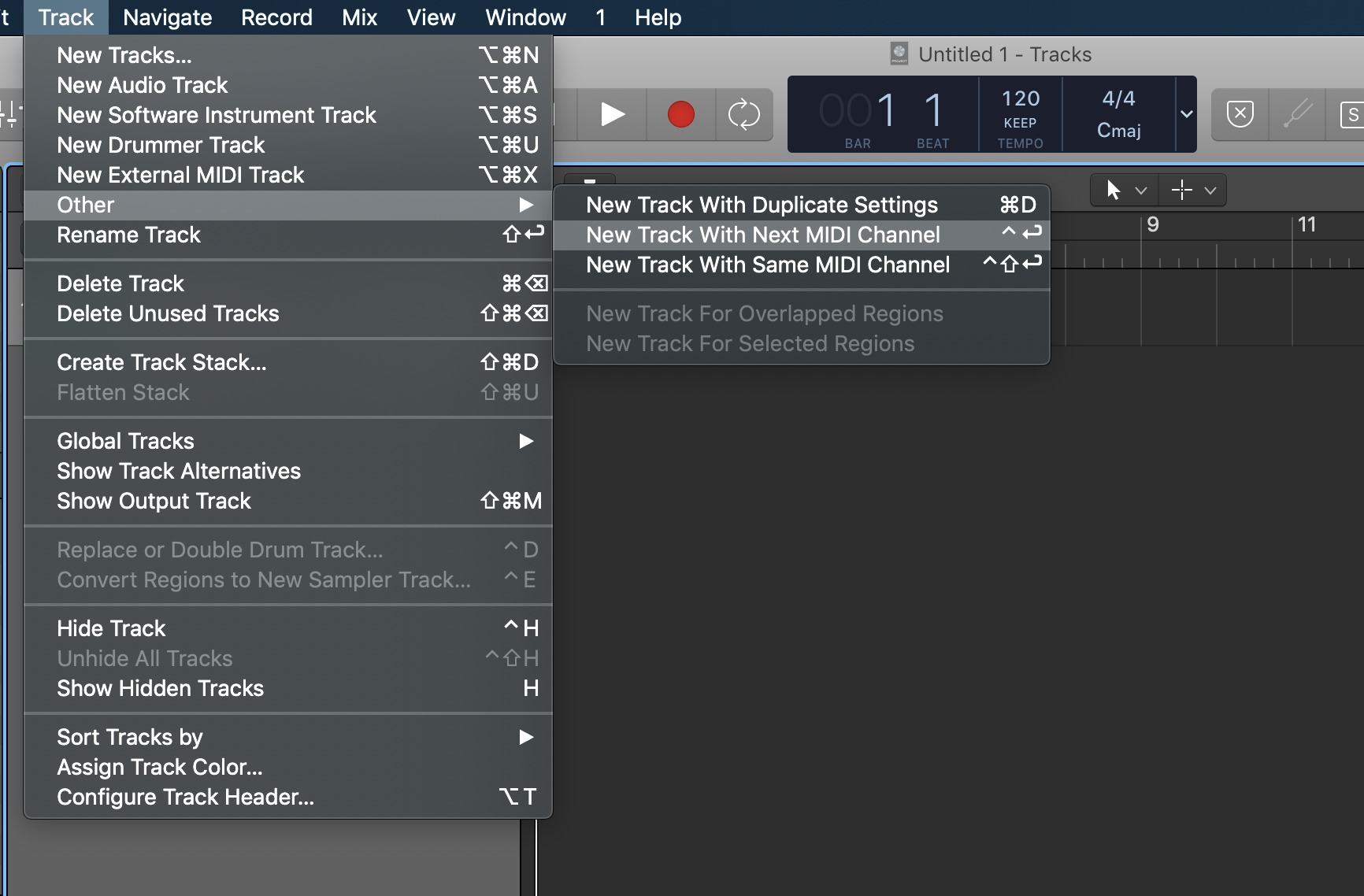Home>Devices & Equipment>Radio>When Operating Your Vessel With A VHF Radio What Channel Must You Monitor


Radio
When Operating Your Vessel With A VHF Radio What Channel Must You Monitor
Modified: January 22, 2024
Learn about the essential VHF radio channel you must monitor while operating your vessel. Stay connected and ensure safety on the water with proper radio communication.
(Many of the links in this article redirect to a specific reviewed product. Your purchase of these products through affiliate links helps to generate commission for AudioLover.com, at no extra cost. Learn more)
Table of Contents
Introduction
Welcome to the exciting world of boating and radio communication! As you set sail on your vessel, it is crucial to ensure you have a VHF radio onboard. This essential piece of equipment allows for effective communication with other boaters, the Coast Guard, and other emergency services.
However, simply having a VHF radio is not enough. To ensure the safety of yourself and others on the water, it is important to know which VHF radio channel you must monitor during your boating adventures.
In this article, we will explore the regulations and requirements for VHF radio monitoring, as well as the designated channel you must keep an ear on at all times. We will also discuss any exceptions to this general rule and the benefits of monitoring additional VHF radio channels.
So, let’s dive in and discover the critical role that monitoring a VHF radio channel plays in ensuring safe and enjoyable boat journeys.
Understanding the Importance of Monitoring VHF Radio Channels
When operating your vessel, being aware of your surroundings and staying in communication with other boaters and emergency services is paramount to ensuring a safe boating experience. This is where monitoring VHF radio channels becomes crucial.
VHF, or Very High Frequency, radio channels are designated frequencies used for maritime communication. By monitoring these channels, you can stay updated on important information, receive weather alerts, and effectively communicate with nearby vessels or emergency services in the event of an emergency.
One of the primary benefits of monitoring VHF radio channels is the ability to receive important safety broadcasts and navigation warnings. These broadcasts can provide critical information about hazardous conditions, such as severe weather, navigation obstructions, or search and rescue operations in progress.
In addition to safety broadcasts, monitoring VHF radio channels allows you to communicate with other boaters in your vicinity. This can be particularly helpful in situations where you need assistance, want to report a navigational hazard, or simply wish to establish contact for general communication.
Furthermore, if you find yourself in an emergency situation, such as taking on water or experiencing a medical emergency, monitoring VHF radio channels can be a lifeline. By broadcasting a distress call on the appropriate channel, you can alert nearby vessels and emergency services to your situation, increasing the chances of a successful rescue operation.
Overall, monitoring VHF radio channels provides you with valuable situational awareness, enhances safety on the water, and promotes effective communication with other boaters and emergency services.
Regulations and Requirements for VHF Radio Monitoring
As a responsible boater, it is important to familiarize yourself with the regulations and requirements for monitoring VHF radio channels. These regulations ensure safe and efficient communication on the water.
The United States Federal Communications Commission (FCC) mandates that vessels equipped with a VHF marine radio must monitor certain channels while underway. This requirement applies to all recreational vessels, as well as commercial vessels, fishing vessels, and other types of boats.
The specific regulations governing VHF radio monitoring may vary slightly depending on your location. However, in most cases, boaters operating in coastal waters and the Great Lakes must monitor channel 16, also known as the international hailing and distress frequency.
Channel 16 is designated for emergencies, hailing other vessels, and establishing initial contact. It serves as a universal channel for distress calls and should be kept clear as much as possible.
In addition to channel 16, there may be other channels specifically designated for navigation safety, commercial vessel traffic, or other purposes in your area. It is important to familiarize yourself with these additional channels, as they may contain important safety information or communication protocols relevant to your location.
It is also crucial to have the VHF radio set to the proper channel and volume level, ensuring that you can receive and transmit information effectively. Regularly check your equipment to make sure it is in good working condition and keep spare batteries on board to avoid any disruptions in communication.
Failure to comply with these monitoring requirements can result in penalties, as well as potentially endangering your own safety and the safety of others. Therefore, it is essential to adhere to the regulations and ensure that you are diligently monitoring the appropriate VHF radio channels at all times while underway.
The Designated Channel You Must Monitor
When operating your vessel with a VHF radio, there is a specific channel that you must monitor to ensure effective communication and safety on the water. In most cases, this designated channel is channel 16.
Channel 16 is internationally recognized as the hailing and distress frequency. It is used for emergency situations and initial contact with other vessels. Monitoring this channel allows you to receive distress calls and emergency messages, as well as establish communication with nearby vessels or the Coast Guard in case of an emergency.
By keeping a vigilant ear on channel 16, you can quickly respond to distress calls and provide assistance when needed. It is crucial to remember that in emergency situations, timely communication can make a significant difference in saving lives and ensuring a successful rescue operation.
While channel 16 serves as the primary channel for emergency communication, it is important to note that it is not intended for prolonged conversations or non-emergency communication. Once initial contact is established, it is customary to switch to a different working channel to avoid congestion on channel 16.
In addition to channel 16, there may be other designated channels for specific purposes, such as navigational safety or communication with local authorities. These additional channels vary depending on the region and local regulations. It is recommended to familiarize yourself with the specific channel allocations in your area to ensure compliance with the monitoring requirements.
Remember, monitoring the designated VHF radio channel, particularly channel 16, is crucial for maintaining situational awareness and responding promptly to emergency situations. By staying tuned in, you contribute to a safer and more secure boating environment for yourself and fellow boaters.
Exceptions to the General Monitoring Requirement
While it is important to monitor the designated VHF radio channel, there are certain exceptions to the general monitoring requirement that boaters should be aware of.
In some instances, boaters may be operating in areas where alternative channels are designated for specific purposes, such as bridge-to-bridge communication or commercial vessel traffic. In such cases, boaters are required to monitor these alternative channels instead of the standard channel 16.
Another exception to the general monitoring requirement is when boaters are performing authorized radio silence, such as during military operations or law enforcement activities. During these situations, boaters may be instructed not to monitor or transmit on any VHF radio channels to maintain operational security.
It is important to note that while exceptions to the general monitoring requirement exist, they are typically communicated through Notice to Mariners and other official channels. Boaters should stay informed about any exemptions or temporary changes to the monitoring requirements in their area and comply with the specific instructions provided.
Furthermore, boaters must always maintain a vigilant watch and be prepared to switch to the designated channel for emergency communication, even if exempt from the general monitoring requirement. This ensures that in the event of an emergency, immediate communication can be established with other vessels or emergency services.
Ultimately, understanding and complying with any exceptions to the general monitoring requirement is crucial for boaters to ensure effective communication and safety on the water. Staying informed and adhering to the specific monitoring instructions in your area are key to promoting a secure and well-regulated boating environment.
Benefits of Monitoring Additional VHF Radio Channels
While monitoring the designated VHF radio channel is essential for boating safety, there are also several benefits to monitoring additional channels. These channels provide valuable information and enhance communication capabilities while on the water.
One of the primary benefits of monitoring additional VHF radio channels is the access to important safety information specific to your region. Different channels may be dedicated to weather updates, navigational hazards, local marine traffic, or other pertinent information that can impact your boating experience.
By monitoring these additional channels, you can stay informed about changing weather conditions, such as approaching storms, high winds, or fog, allowing you to adjust your plans accordingly and ensure the safety of your vessel and passengers.
In addition, monitoring specific channels designated for commercial vessel traffic or bridge-to-bridge communication can help you stay aware of large ships or other vessels in your vicinity. This awareness is particularly important in areas with heavy marine traffic or when navigating through narrow passages or bridges.
Monitoring additional channels can also provide opportunities for communication and camaraderie with other boaters. For example, some channels are reserved for general conversation or non-commercial maritime services, allowing you to connect with fellow boaters, share experiences, and seek advice or recommendations.
Furthermore, monitoring channels that are utilized by local authorities or marine law enforcement can keep you up to date on any regulatory changes, safety inspections, or designated boating areas. This ensures compliance with local regulations and promotes a cooperative and responsible boating community.
By taking advantage of the benefits of monitoring additional VHF radio channels, you can enhance your boating experience, stay informed about important safety information, and foster effective communication with other boaters and authorities.
However, it is essential to remember that even when monitoring additional channels, channel 16 remains the primary channel for emergency communication. No matter which channels you choose to monitor, always prioritize the safety of yourself and others on the water.
Conclusion
Monitoring the appropriate VHF radio channels is a crucial aspect of boating safety. By staying tuned in, you ensure effective communication with other boaters and emergency services, receive important safety information, and contribute to a secure boating environment.
The designated channel you must monitor, typically channel 16, serves as the international hailing and distress frequency. It is the primary channel for emergency communication, distress calls, and initial contact with other vessels. By keeping a vigilant ear on this channel, you can quickly respond to emergencies and provide assistance when needed.
While channel 16 is of utmost importance, there may be exceptions to the general monitoring requirement, such as alternative channels designated for specific purposes or authorized radio silence. It is crucial to be aware of any exemptions or temporary changes to the monitoring requirements in your area and adhere to the specific instructions provided.
Additionally, monitoring additional VHF radio channels provides numerous benefits, including access to valuable safety information, enhanced communication capabilities, and opportunities for camaraderie with other boaters. By staying informed and engaged, you can elevate your boating experience and ensure responsible navigation on the water.
In conclusion, operating your vessel with a VHF radio and monitoring the appropriate channels is an essential practice for all boaters. It allows for effective communication, improves safety on the water, and promotes a cooperative and responsible boating community. So, whether you’re navigating coastal waters, the Great Lakes, or any other waterway, remember to keep your VHF radio on and stay connected for a memorable and safe boating adventure.











